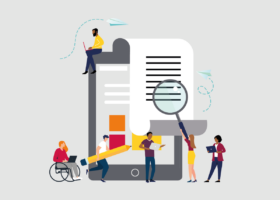The Office of Tax Simplification (OTS) have published a new report ‘Taxation and Life Events: Simplifying tax for individuals’ which looks at ways to improve how individuals engage with the tax system, principally income tax and National Insurance contributions (NICs), in relation to a wide range of important life events. The report considers events, such as having a child, entering the workplace, changing jobs, saving for a pension and drawing a pension in retirement, and supporting those who are less able to take care of themselves.
Here, Mercer & Hole Consultant, Robert Jamieson MA FCA CTA (Fellow) TEP looks specifically at the chapter focusing on Child Benefit.
The background to Child Benefit
The child benefit regime was introduced in 1977 and is given for the eldest child as well as for the younger ones (unlike the previous family allowance system). A subsequent amendment brought in a higher payment for the first child than for younger siblings. In 2010, it was announced that Child Benefit would be withdrawn from families where any member of the household was a higher rate taxpayer (ie. someone with income of more than – at the time – £42,475). This caused a public outcry when it was realised that, if a married couple each earned, say, £40,000, there would be no removal of the benefit, despite the fact that the family enjoyed an annual income of £80,000 (given that neither of the spouses was a higher rate taxpayer). As a result, this proposal was rethought.
The revised legislation involved a High Income Child Benefit Charge (HICBC). The HICBC applies where an individual or their partner receives child benefit and either of them has an income of more than £50,000. The charge claws back:
(i) an equivalent sum to all the child benefit paid if that person’s income is £60,000 or more; and
(ii) a tapered proportion of the child benefit if the person’s income falls between £50,000 and £60,000.
The issues surrounding Child Benefit
The difficulty with this regime is that those parents who are affected have various options about their next course of action, but unfortunately the consequences of these possibilities are not immediately obvious. The options for better-off parents of the newborn child are:
(i) not to claim Child Benefit at all;
(ii) to claim the benefit but not to receive payment of it; or
(iii) to receive the benefit but, in effect, to pay some or all of it back through the HICBC.
Registering a claim for Child Benefit but then opting not to receive it is the only way to avoid payment of the HICBC (and its associated administration), while preserving National Insurance (NI) entitlements. It is not widely appreciated that, in addition to providing financial support for families with children, Child Benefit has important links with the wider NI system by:
(i) being the main way whereby children are issued with a National Insurance Number (NINO) when they reach the age of 16; and
(ii) providing the Child Benefit claimant (usually the mother) with national insurance credits until the child is 12 (which can help fill gaps in the claimant’s NI record for state pension purposes if they are not working).
The consequences of not claiming Child Benefit at all (perhaps to avoid needing to pay the HICBC and to register for self-assessment) are that:
(i) the child will have to take an additional step at a later stage in order to prove their identity for the purpose of obtaining their NINO; and
(ii) one of the parents may lose out on future state pension claims to which a more complete national insurance record would entitle them.
Findings and recommendations on Child Benefit
The OTS points out: “All this can easily be confusing for parents and there have been numerous complaints about the process and comments in the national media. One reason for this is that the process appears illogical. It could be more helpful (both in the child benefit claim form and the guidance on www.gov.uk) to explain the benefits of making a claim before going on to cover the option not to receive payments, if the claimant wishes to ensure there will not be a HICBC.”
Another concern is that some taxpayers can face an unexpected charge at the end of a tax year which they may not have readily anticipated. For example, an individual’s income may fluctuate because they are self-employed or a mid-year bonus or promotion might result in their income being at a higher level than they expected at the beginning of the year. It is believed that HMRC have been alerted to this prospect with the result that they are planning more targeted publicity in order to increase the public’s awareness of these difficulties.
With reference to these matters, the OTS have made three firm recommendations:
- The government should review the administrative arrangements linked to the operation of child benefit, making clear the consequences of not claiming the benefit, with a view to ensuring that people cannot lose out on national insurance entitlements.
- The government should consider the potential for enabling national insurance credits to be restored to those people who have lost out through not claiming Child Benefit.
- The government should consider how to ease the process of enabling children of those who have not claimed child benefit to receive their NINO.
These recommendations take into account that, since the HICBC regime went live on 7 January 2013, there are likely to be hundreds of thousands of children who will not be given their NINO automatically on attaining the age of 16 and a somewhat smaller number of parents who will not receive NI credits while looking after their youngsters.
Finally, one planning thought which needs to be factored in is this: where couples with young children run a family company, careful consideration should be given to the level of income withdrawn from the company – for example, by paying modest dividends one year followed by much larger payouts the next, can the couple still receive Child Benefit on a tax-free basis every other year?
Next steps
If you require any advice in relation to the content of this article on Child Benefit, please contact Lisa Spearman or your usual partner.






 7 mins
7 mins 
